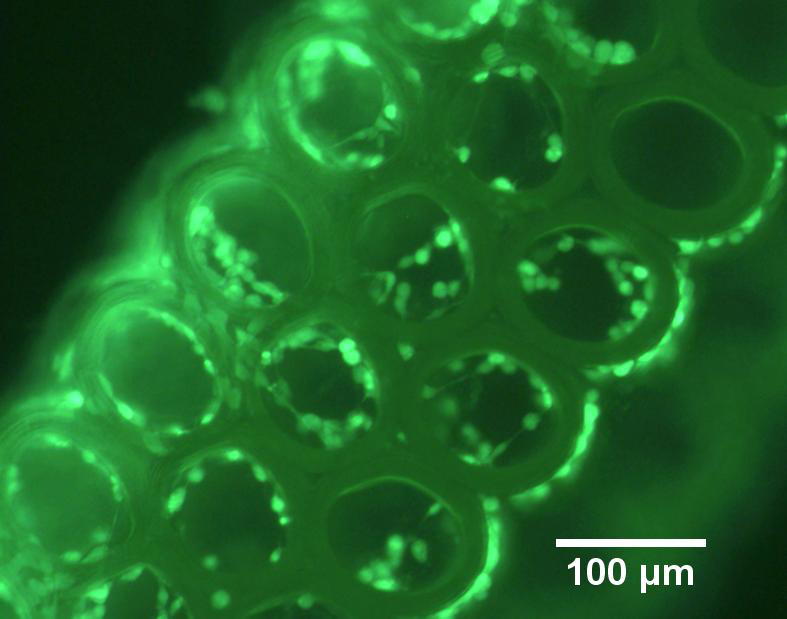3D-printing non-toxic biocompatible medical implants
October 25, 2013

A
common vitamin now allows researchers to create finely-detailed,
biocompatible structures, such as this scaffold for tissue engineering
(credit: Regenerative Medicine)
“This opens the door to a much wider range of biocompatible implant materials, which can be used to develop customized implant designs using 3-D printing technology,” says Dr. Roger Narayan, senior author of a paper describing the work and a professor in the joint biomedical engineering department at NC State and UNC-Chapel Hill.
Using light to create create implants
The researchers in this study focused on a 3-D printing technique called two-photon polymerization, because this technique can be used to create small objects with detailed features — such as scaffolds for tissue engineering, microneedles, or other implantable drug-delivery devices.
Two-photon polymerization is a 3-D printing technique for making small-scale solid structures from many types of photoreactive liquid precursors. The liquid precursors contain chemicals that react to light, turning the liquid into a solid polymer. By exposing the liquid precursor to targeted amounts of light, the technique allows users to “print” 3-D objects.
Two-photon polymerization has its drawbacks, however. Most chemicals mixed into the precursors to make them photoreactive are also toxic, which could be problematic if the structures are used in a medical implant or are in direct contact with the body.
But the researchers have found that riboflavin — is both nontoxic and biocompatible — can become photoreactive be mixed with a precursor material such as triethanolamine.
No, you can’t make your own DIY implants on your home or office 3D printer (yet).
The research was supported by a National Science Foundation grant.
Abstract of Regenerative Medicine paper
Aim: In this study, the suitability of a mixture containing riboflavin (vitamin B2) and triethanolamine (TEOHA) as a novel biocompatible photoinitiator for two-photon polymerization (2PP) processing was investigated. Materials & methods: Polyethylene glycol diacrylate was crosslinked using Irgacure® 369, Irgacure 2959 or a riboflavin–TEOHA mixture; biocompatibility of the photopolymer extract solutions was subsequently assessed via endothelial cell proliferation assay, endothelial cell viability assay and single-cell gel electrophoresis (comet) assay. Use of a riboflavin–TEOHA mixture as a photoinitiator for 2PP processing of a tissue engineering scaffold and subsequent seeding of this scaffold with GM-7373 bovine aortic endothelial cells was also demonstrated. Results: The riboflavin–TEOHA mixture was found to produce much more biocompatible scaffolds than those produced with Irgacure 369 or Irgacure 2959. Conclusion: The results suggest that riboflavin is a promising component of photoinitiators for 2PP fabrication of tissue engineering scaffolds and other medically relevant structures (e.g., biomicroelectromechanical systems).
(¯`*• Global Source and/or more resources at http://goo.gl/zvSV7 │ www.Future-Observatory.blogspot.com and on LinkeIn Group's "Becoming Aware of the Futures" at http://goo.gl/8qKBbK │ @SciCzar │ Point of Contact: www.linkedin.com/in/AndresAgostini
 Washington
Washington